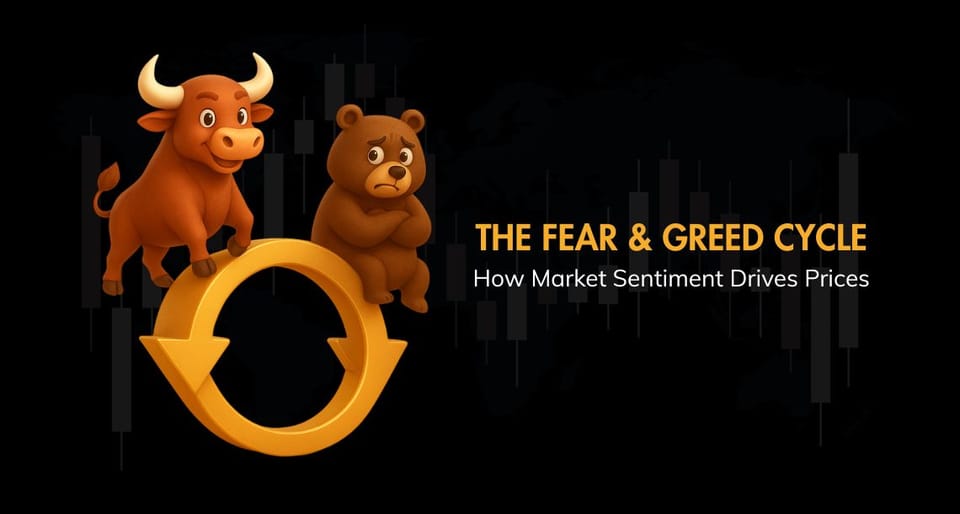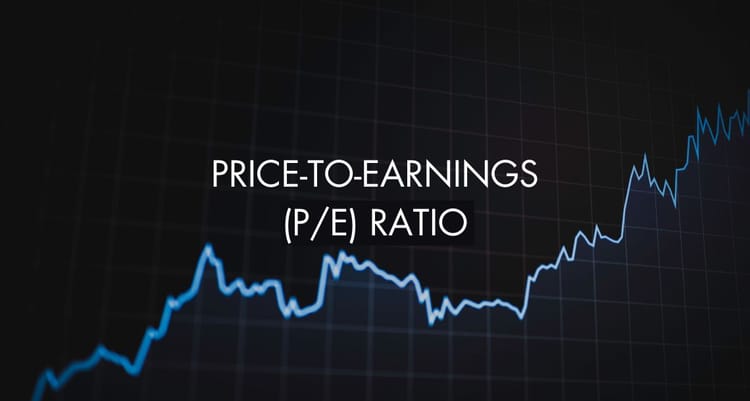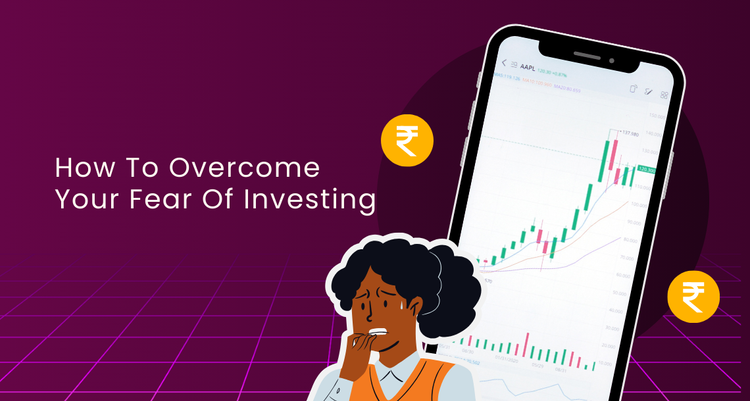The Fear & Greed Cycle: How Market Sentiment Drives Prices

Stock markets are driven by numbers, right?
Yes… and no.
If fundamentals were the only force, prices would always move in a straight line. But we know that’s not how it works. Behind every market rally or crash is an invisible engine running on two very human emotions — fear and greed.
What Is the Fear & Greed Cycle?
At its core, the Fear & Greed Cycle is the emotional loop that investors get trapped in — chasing highs when everyone’s excited and fleeing in panic when the mood turns dark. It’s predictable, powerful, and it repeats. Again and again.
Warren Buffett put it best:
“Be fearful when others are greedy, and greedy when others are fearful.”
Why? Because market sentiment often swings too far in both directions, detaching from reality in the process.
Let’s Break It Down: The Cycle in Action
1. Optimism → Excitement → Euphoria (Greed Zone)
- Stocks are rising. Everyone’s talking about the market.
- New investors join in. Media headlines are glowing.
- Logic takes a backseat — “Valuations don’t matter anymore!”
- This is the greed phase: when people believe the party will never end.
What happens?
Investors overpay. Bubbles inflate. Risk is ignored.
2. Anxiety → Denial → Fear (The Shift Begins)
- A correction hits. Maybe a negative global cue, maybe just profit-booking.
- Some stay calm. Others start to doubt.
- Fear creeps in. Questions arise: “Should I exit? Is this the top?”
What happens?
Uncertainty triggers sell-offs. Volatility rises.
3. Desperation → Panic → Capitulation (Fear Zone)
- Prices drop sharply.
- Media turns bearish. WhatsApp groups are filled with negativity.
- Many investors exit at a loss — not because fundamentals are broken, but because emotions take over.
What happens?
Panic selling. Good stocks get dumped. Fear blinds judgment.
4. Despair → Caution → Hope → Optimism (Recovery Phase)
- Slowly, markets stabilise.
- Smart money re-enters. Value emerges. Fundamentals matter again.
- Confidence returns — and the cycle resets.
So, Who Wins This Emotional Battle?
Not the one who times the market perfectly.
But the one who understands this cycle — and doesn’t get swept away by it.
Mastering the Cycle
At Fynocrat, we don’t chase greed. We don’t run from fear.
We observe. We assess. And we act only when research, rationale, and time are on our side.
In fact, some of the best opportunities arise when others are afraid to look.
That’s where our research-led strategies — like Mauka, T-20, and Wealth Builder — thrive.
✅ How to Avoid Getting Trapped in the Fear & Greed Cycle:
- Stick to a plan. Don’t invest blindly when everyone’s euphoric.
- Have conviction. Don't exit just because the market is red.
- Diversify smartly. Emotionally-driven investors often go “all-in” — don’t.
- Keep perspective. Headlines fade, but well-picked stocks endure.
- Lean on research, not reactions.
In Closing: Markets Move, But Human Nature Doesn't
Understanding fear and greed isn’t just a trading hack — it’s an investing superpower.
So the next time the market is booming or bleeding, ask yourself:
👉 Am I thinking, or just feeling?
👉 Am I following the crowd, or following the facts?
Because in the end, those who master their emotions — master the market.
Stay steady. Stay rational. Stay invested.
– Team Fynocrat
Frequently Asked Questions (FAQ)
Q1. What exactly is the Fear & Greed Cycle in the stock market?
It’s the recurring emotional pattern where investor behavior swings between extreme optimism (greed) and extreme pessimism (fear). These emotions can significantly distort stock prices away from their actual value.
Q2. Why is it important to understand this cycle as an investor?
Because markets are not always rational. Understanding the cycle helps you avoid emotional decisions — like buying into hype or panic-selling quality stocks — and instead stay focused on long-term goals.
Q3. How can I protect myself from getting caught in the cycle?
Stick to a disciplined strategy, focus on fundamentals, avoid herd mentality, and invest based on research, not emotion. At Fynocrat, our products are designed to help you do exactly that.
Q4. Is it bad to feel fear or greed while investing?
Not at all. It’s human. The key is not letting these emotions dictate your decisions. Recognizing them early gives you the clarity to pause, assess, and act wisely.
Q5. Can investors really make gains during the fear phase?
Yes — some of the best investment opportunities often emerge during market corrections when quality stocks are undervalued. The challenge is to stay rational when others are fearful.
Q6. How does Fynocrat help investors navigate emotional market phases?
Our research-backed products — like Mauka, T-20, and Wealth Builder — are built with long-term conviction, not short-term sentiment. We help investors stay anchored, informed, and ready when true opportunities arise.
Need help staying objective during volatile times?
📩 Reach out to our team or explore our investor-focused solutions at www.fynocrat.com






Member discussion